Early reports of overheating issues with Qualcomm’s Snapdragon 810 SoC may not have been entirely unfounded. It’s one of the reasons it was reported early on that Samsung would go with their own chipset for the Samsung Galaxy S6 and Galaxy S6 Edge. Despite LG’s claims to the contrary, someone was finally able to put these claims to the test.
The folks at Dutch site Tweakers.net got a hold of an HTC One M9 and after putting it through a benchmarking stress test, found that the phone got hot… real hot. According to their heat sensing camera, the phone was capable of reaching upwards of 130 degrees Fahrenheit (55 Celsius). This was significantly warmer than comparable devices like the iPhone 6 Plus, LG G3, Samsung Galaxy Note 4, or even its predecessor, the HTC One M8 — all of which hovered around the 104-degree mark (40 Celsius).
A few things to keep in mind: this was a stress test. The GFXBench used was meant to push a device to its limits, one that not even 3D games like Asphalt 8 or Assassin’s Creed: Pirates were capable of reaching. When playing those same games, the One M9 was able to keep much reasonable temperatures, capping out at around 100 degrees Fahrenheit (38 Celsius).
Also, let’s not forget that this was a stress test performed on a device running non-final software and shouldn’t be reflective of normal day-to-day use. While the benchmark did cause the phone to get much warmer than competing devices, a lot can change from now and when the phone is eventually released as this is something that could be easily corrected in a software update (at the cost of slightly lower benchmarks).
UPDATE: After the above news started making the rounds, HTC Communications Manager Jeff Gordon tweeted out the following statement:
PSA: One more time, all together now: HTC One M9 software isn’t final yet, no matter how many pre-release benchmarks you run.
— Jeff Gordon (@urbanstrata) March 16, 2015

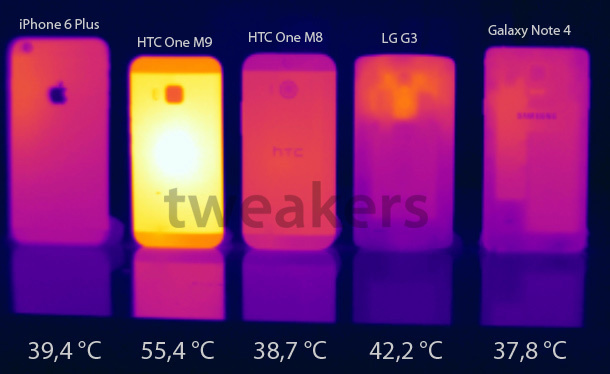


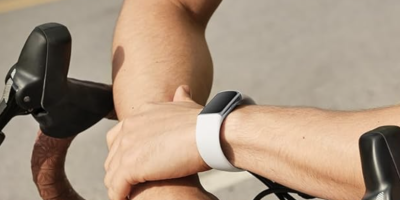
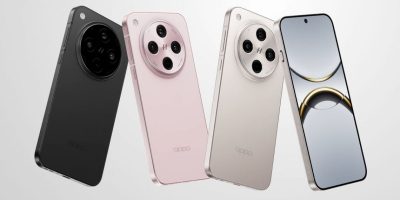
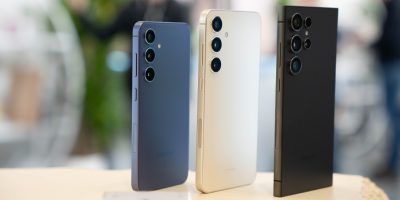




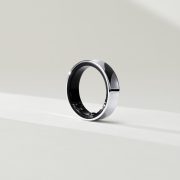

At this point S805>S810
Nothing definitive yet.
I want to know if it effect performance, If it run hotter but also run faster etc. I don’t see what the issue. And metal is conductor of heat. You can feel more but then it can cool faster
True that. Like we said in the post, the high temps were only during benchmark tests — not actual use. 3D games never got it that hot.
HTC kernels don’t have much thermal throttling. The only other S810 is the flex 2 and it would been nice to see how hot that run, then we can see if the S810 does have issue.
The battery life is much worse than the M8.
How would you know this? The phone is not even out yet.
Hopefully it just be messed up if the 810 ended up being a downgrade. Either way I think I’ll just let the 805 tide me over till the 820, or z4 ultra hit.
The GPU is what really matter now, the one on the S810 is faster then the S805. It is not like we will do calculations for a black hole on our phone. People don’t understand what the CPU and GPU does.
With the thermal throttling in the S810 everything in the soc, including the GPU is limited and operating well below where it should.
That’s the phone is all metal. Lol
Actually, that’s pretty normal: HTC has kept cheating in benchmarks with its “performance mode” for years, which disables thermal throttling. Sometimes, there are consequences. :)
Samsung does the exact same thing, yet the Note 4 wasn’t getting anywhere near as hot. The snapdraon 810 is the issue.
Samsung hasn’t done that since the Note 3. The S5 didn’t have any and neither did the Note 4.
One device getting hot in benchmarks doesn’t mean the problem is inherent to the processor itself. It could be the thermal throttling (or lack thereof) in HTC’s kernel. It could be physical design of the device not moving heat away from the processor fast enough. Only if/when we see other 810-based devices overheating can we really point the finger at Qualcomm.
The G flex 2 is notorious for overheating and thermal throttling, it’s also packing the 810, so it’s hardly a one-off issue.
All of the news of the G Flex 2 overheating was based on pre-release software. Nobody who actually owns a G Flex 2 (it just became available a few days ago) has reported overheating. Stop spreading FUD.
qualcomm is starting to look like a looser , or at least an uphill walker , and they ‘d better come up with something BIG quickly …
So who’s your alternative to Qualcomm?
Exynos? Terrible LTE radios and terrible developer support.
Mediatek? Broken bluetooth, lack of updates, and even worse developer support.
Intel? Still trying to get into the smartphone game (decent for tablets though).
NVidia? They’ve already quit smartphones.
Samsung wouldn’t just lie and piss off Qualcomm by saying there is something significantly wrong with the 810 and move away from their chipset this time round for nothing.
It is not cheating when you can turn on. You change the mode of performance of the CPU without root.
This basically just sealed the deal on my OPO or Moto X buy.
I was playing GTA:VC on my Z3 (SD801).At Full Graphics (Gorgeous)..my CPU app alerted me that my CPU has reached 133°F…I still kept playing for another hour..reached 145°F….then I stopped….phone still working fine….#Trooper
Jesus Christ. I was clearly noticing my S3 sometimes being warm at about 42°C (108°F) and quite worried about. Meanwhile some people have it at 56°C (133°F) and even as high as 63°C (145°F) and they don’t even bat an eye. As for the hashtag it really doesn’t do anything outside of Twitter except annoy people just like the “keep calm and…” crap used to. http://m.youtube.com/watch?v=2I-nudEqz7o
They should test the Oneplus One, cuz early on sans update that thing was blazing. Thankfully it’s been much cooler since.
Would still choose the M9 over any other phone on the market. It will be my next phone when released and I can give my Note 4 a rest as my back up device.
As hot as my G3 gets, there is no way I would willingly use a phone that could reach temps that high… it just isn’t comfortable to hold at that point.
Just don’t run benchmarks while holding it, and you should be fine. That, and it probably wont even be an issue by the time final software ships.
after cracking my g3 screen from its very first drop, i’ve kept it in a case ever since. Never felt it get even remotely warm.
Just read that the release in Taiwan has been delayed due to an urgent software issue…. I so want to happily replace my M7 with an M9, but I honestly don’t have a good feeling about this thing…
130 degrees Fahrenheit? Holy shizz that is some serious scovilles.
Can’t say the m9 isn’t a hot phone lol
HTC got that fire!
I don’t really see how this is an issue.
According to the CPU Temp in statusbar xposed module, My Z1 reaches 60c when I play Injustice or Minecraft for 20 mins etc.
“The GFXBench used was meant to push a device to its limits, one that not even 3D games like Asphalt 8 or Assassin’s Creed: Pirates were capable of reaching.”
So if the M9 doesn’t get as hot as my current device when running something apparently more CPU/GPU intensive, that doesn’t sound like an issue to me.
Your device CPU Temp reaches 60c.Here,the outer case temp reaches 55c which is too high and is uncomfortable to hold,that means the temp inside the device which will be more high and will cause thermal throttling.
The outer case it metal, learn the different between conductor and insulator is first.
hey, maybe samsung wasn’t lying when they said the 810 was overheating in the S6 lol
Lol yes that’s true Eskimos would love this…
It’s OK, just get an icepack case.
This is a disaster. Note 4 coolest kid on the block.
Since when did an HTC phone NOT get alarmingly hot? My M7 used to get too hot to the touch all the time.
My old HTC One X+ would get very hot as well compared to all of my other devices
So did the EVO, I don’t remember the EVO 3D getting insanely hot.
Going with Intel this year.
Zenfone 2?
If anything, it is more a measure of how effective the HTC chassis is at removing heat from the processor. If it was a pre-production phone set to 11 by some stress test app, that says little about the thermal management that will be in place when released.
Now if the thing releases and throttles like crazy after a bit of gaming, then a person may have a point. But for now they are just trying to make drama.
It would be interesting to see what the backside temp is if all the processors were throttled such that they all run at the same internal chip temp, or throttled so they all run a benchmark at the same speed.
Effective(?) chassis that needs to utilize “human body” as a heat sink? Lol, Eskimos would certainly love this “hot-pack” alternative.
Learn the different between conductor and insulator before you sounds even dumber
it would make sense if it were some other product such as a desktop computer. but consumers would be holding this phone in their hands. other competition can keep their phone’s temperatures down without their internal cpu overheating, HTC should be able too
Besides the M8 and iPhone 6 the other phoneare make up of plastic, plastic are insulator. That mean the will not be hot on the outside but the internal temperature will be greater
if the goal is to lower the external temperature of the phone, why not HTC just add an insulating material like plastic, to the inside of the phone, and keep the exterior metal?
I can tell you why they don’t do that. because if they did, the cpu of the phone would get even hotter than 50 C and that would be dangerous to the battery.
hopefully in actual usage the device doesn’t heat up like that.
It does not, when gaming it was 42C. But when benchmark it go that hot. we don’t need know the internal temperature of other devices. we only know the external temperature so they can even be hotter
That Jeff character sounds like a jerk
I concur…one hundred percent!
Yeah…sounds like a total twat, he’s pissed cus there isn’t much HTC can do this time round apart from throttling the damn phone which will bring performance down even more than the Samsung S6
Interesting! Me personally,I just tap on ‘ye ol’ CLEAMASTER and tap cool down and bada-bing-bada-boom…it drops my phones temp. depending how high my Nexus 5 gets! Works for me!
Wouldn’t doing that repeatedly during a heavy-duty gaming session be quite quite tiresome? ;)
Your phone launches in four days….I’m not buying that the “software isn’t finished yet.”
He’s referring to the software on the review phone given to tech journalists weeks ago..
So their big announcement for Wednesday should help cool things a bit
that boy Jeff Gordon ready to snap on yall lol
i still don’t see how we are managing to pack in so much power without active cooling, at this point, i would think they are rather similar to a desktop cpu in what they can do.
unless they can get away with changing voltage at last minute, this isnt going to change in a few days unless they decide to intentionally throttle it, but then they’ll be even further behind the s6 in benchmarks. It’s good to hear people aren’t having problems in games yet though, but this will still cause a bit a PR nightmare. Most phones I’ve Used get nice and toasty using GPS, even to the point i start to feel concerned lol, I think the high temps will eventually come into play at some point.
I say they’ll leave the speed on for launch and the slew of review benchmarks, then sneak in a ninja throttle update down the line, once all reviews are out. Hot chip could equal burns, more battery explosions, increased chances of phones dying/ components failing – there’s no way they want to take a chance on all that in the long term.
Wow you don’t under anything do you? The kernell can make all the different on the phone I including heat. The Nexus 6 with 5.1 update and the one plus one is a good example of different kernels changing how the phone preformed
What’s the issue? HTC can market this as a feature. Built in handwarmers, and not to mention it is the hottest phone you can buy right now!
as i continue to read these forums i have come to the conclusion that i simply have zero tolerance for most people…no really, its like… 8 out of 10 people i just can not stand. is that bad? =)
You want a mindfuck and a total loss of faith in humanity? Go to the comment section on BGR. Even the staff members are trolls.
You think this is bad go read the extravagant ignorance that are the CNN comments or well any major news site.
so what you are saying is that you are for economical globalization?
Well at least you can cook breakfast on it.
I’m going to start a food truck business with all of these are my cookers
Anyone know the IR camera used and if possible is the radiometric image available to download? I’m concerned that these temperatures may have been calculated incorrectly and may not represent the actual differences between phones.
While the numbers may not be precise, I do think that it still does a good job of illustrating the point that the phone gets significantly hotter than the others.
It may be visually as well as numerically misleading if the calculations are not done correctly as all materials do not have the same emissivity. Therefore you can’t really make any conclusions without being sure of this. Since the calculations aren’t linear you can’t even say the difference between two similar materials are correct if the correct emissivity value isn’t used. It’s important to remember that infrared images are images of just that, infrared energy, which is not 1:1 related to temperature.
If I’m not mistaken, both the M8 and M9 are built from all aluminum designs. Unless the aluminum is drastically different for some reason, the emissivity of the two should be relatively similar, if not identical. With this being the case, does that not then validate that the M9 is significantly hotter than the M8 even if the “exact temperatures” shown aren’t 100% correct?
The problem is that default emissivity settings are around .95 and aluminium is very low, say around .30 – .40 maybe so that possible error alone creates a huge discrepancy in the number presented from the start. The second problem here (between two similar materials) is that the calculation used to get temperature data from radiation is non-linear so when you ask is it ‘significantly’ hotter, you can’t really answer that. Since errors get significantly (exponentially) worse as temperature increases. So the error at 55 degrees might be 2 degrees from actual when the error at 70 degrees could be 6 or 7 and so on. Also without the radiometric data in tact to prove those numbers are actual data, the image can be EASILY edited to appear as it does over a 1 or 2 degree difference. So though I don’t imagine anything like that is going on, my point is, you can’t really tell anything with ANY confidence from this image.
The default emissivity settings of what? The sensor? OK, it’s .95 and aluminum is very low, .30 – .40, OK, great. Unless the aluminum is different however, aren’t things still even between the two devices? So why would it matter what the calculations are for the temperature data or what the settings are on the camera? With two devices using the same material, examined at the same time, by the same camera, at the same settings, the signature given off by the two devices is still different.
The same material at the same (wrong) emissivity at different temperatures will have different error percentages in the calculation of that temperature. So at room temp say there’s a 2% error at some amount higher that calculation error could be 10%, it could be 50% depending on how wrong the emissivity was set and what other factors were used to calculate temperature. Basically what I’m saying, with an incorrect emissivity set (and it’s almost certainly the case between different materials in this picture) even with similar materials it’s only mathmatically fair to compare them at the same temperature, which would be a near useless observation to make unless maybe you wanted to see how heat traveled through similar materials, but then you need not make temperature calculations at all. FYI glass and metal are among the worst (lowest) emissive materials, some plastics can be better but some are even relatively transmissive (like tranluscency is to the visible spectrum) in the infrared spectrum.
I’m sort of playing devils advocate here, I’m sure this is just an honest attempt from someone trying to show the world what they experienced and this may be visually representative of that but in all actuality, this is proof of nothing and these numbers should be ignored completely unless they can be backed up with data. Lets also remember that like sound our experience of temperature is very interpretational, a piece of metal and a piece of wood at room temperature, the metal will *feel* cooler to the touch because it transfers thermal energy faster than wood, likewise a metal phone will *feel* hotter, faster than a plastic or glass phone for the same reason.
I think how the energy is transferred between materials is a bit irrelevant because the bottom line is whether or not the temperature, whatever it may be, is unpleasant to touch. I’ve felt my plastic phone get uncomfortably hot before. I don’t know or care that the internal temperature was, all I know is I wanted it to cool down (that and I feared that whatever was making the processor run so hot was also draining my battery). This is probably the same type of thought process that goes through most peoples minds and as such, the images are a good representation of what the taker was trying to illustrate. If you’ve used any one of those existing models and have said “this has gotten [too] hot”, regardless of what the temperatures may be, knowing that the newer M9 gets hotter, however much or little that may be, you can think to yourself that “hey, this also going to get [too] hot”.
It’s worth noting that these phones were pushed to a limit you wont reach under normal circumstances. The new processor may be better at handling tasks that caused the older versions to heat up so you may never actually experience notable temperature changes but either way, I still think the image illustrates it’s point.
I completely disagree, how energy is transferred between materials is entirely relevant to the image because the image does NOT show temperature. People are entitled to their opinions on what phone may or may not be “too hot” but presenting something as fact to prove an opinion is just wrong.
So you said “how energy is transferred between materials is entirely relevant to the image” and then turned around to say “People are entitled to their opinions on what phone may or may not be ‘too hot'”.
Doesn’t that make “how energy is transferred” irrelevant when the only relevant part is how hot it feels to an individual….something that will vary by individual?
“how energy is transferred…” is relevant to getting accurate temperature readings from infrared images, something I am interested in as I have been debating you on the accuracy of the information presented in this image. Anyone can have an opinion and it is up to that person to decide what information is relevant to form their opinion. You started this debate arguing “significance” is somewhat a matter of opinion however it is one based on factual information, one needs to quantify something before someone has an opinion about “too little” or “too much”. So to conclude, if anyone has an opinion of a phone in this image concerning temperature I would say that it would be flawed because the information presented that their opinion would be based upon is flawed at best because there is no verifiable data presented here. I’m not trying to debate anyone’s opinion however what is an opinion worth if it’s not based on some fact?
I understand what you’re saying, if you pick it up and hold it and you think, “hey, wow, this thing is burning up, I don’t want to hold it.” you’ve just made your own opinion, a legitimate one, based on no verifiable data. If you present that to anyone, that’s fine, everyone understands that it’s your experience and everyone else takes it as your opinion. The problem I have with this image is that it is presenting the author’s opinion of their experience to other people as fact. I think people tend towards forming stronger opinions when presented with facts than they would with opinions from other people. Now if the data was available and I could see that the numbers presented were at least reasonable, then I would have no problem with this being presented in the manner it is. As it is presented now it’s just blind faith that the numbers shown are honest and that the numbers they calculated were done correctly.
Considering that they were in the same room, I’m sure the two devices were subject to the same external temperature (with the possibility of a very small, <1% variation). Otherwise, the point of the test is to look at the internal temperatures of the different devices when they are running at their hottest. Testing them at the same internal temperature is useless unless you're just testing your camera but we're testing the devices. They should, and do, vary. Again, even if the calculation to determine temperature is massively incorrect, what difference does it make in illustrating the point that one device is hotter than the other? They were both calculated on the same incorrect scale. If you used the correct calculations, you'd get the correct numbers, but the hotter device would still be hotter either way.
(e.g. one scale says I'm 10lbs heavier than you. The other scale says I'm 30lbs heavier than you. Only one is right but either way you look at it, I'm still heavier than you).
Yes you can say that the M9 is indeed hotter in the image. You can not say with any degree of certainty by how much and you would need to know that to say that the M9 is “significantly” hotter. So your example is a good analogy of this situation, knowing just that someone is heavier is pretty insignificant if you’re trying to draw any meaningful conclusion from just that one fact.
Sorry, the default emissivity of the image, or camera setting is usually high around .95 or .96 at least with FLIR brand cameras and editors
My Nexus 5 gets highest to 65 xD
My dad loves Jeff Gordon. Oh, wrong one.